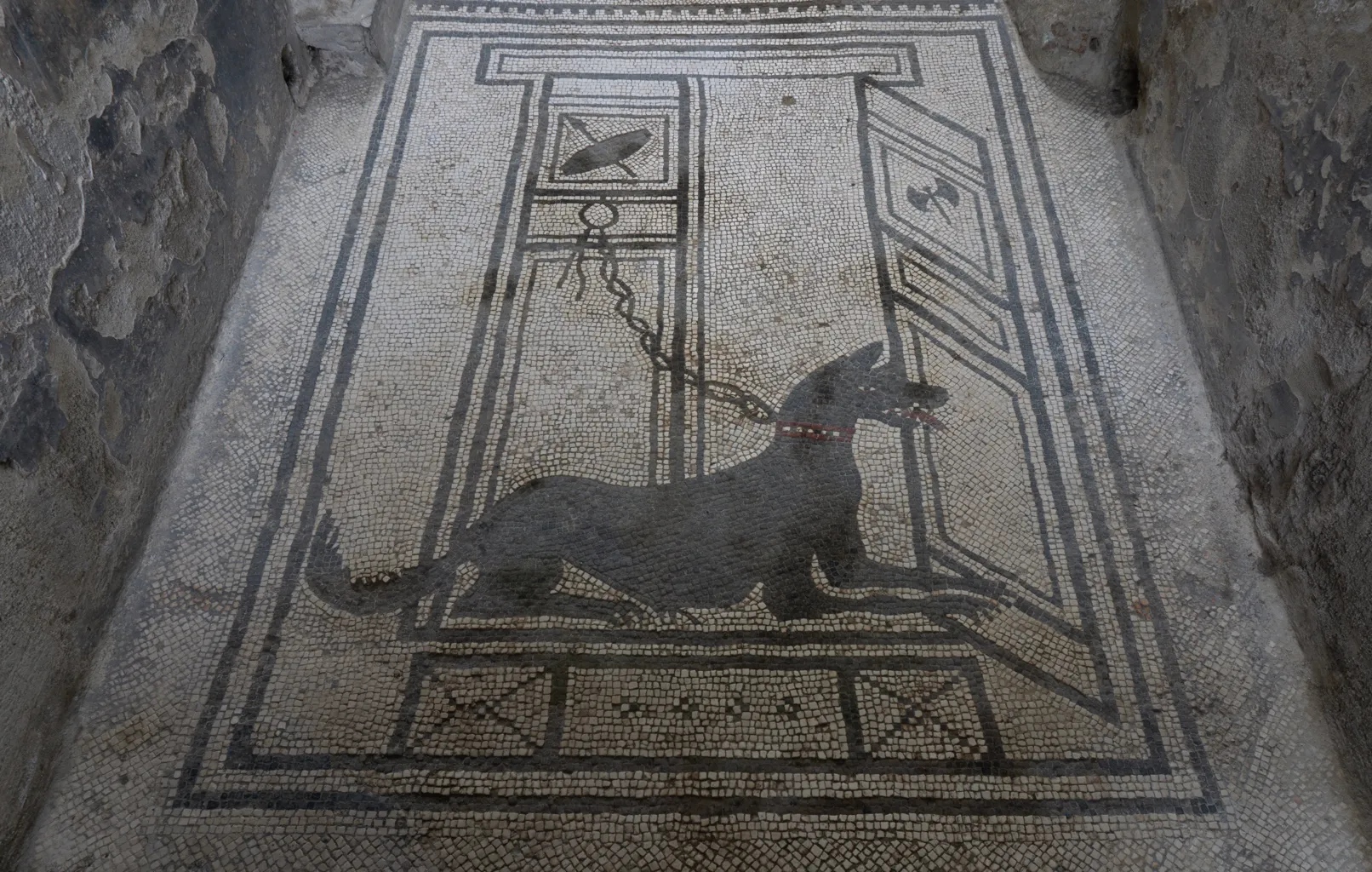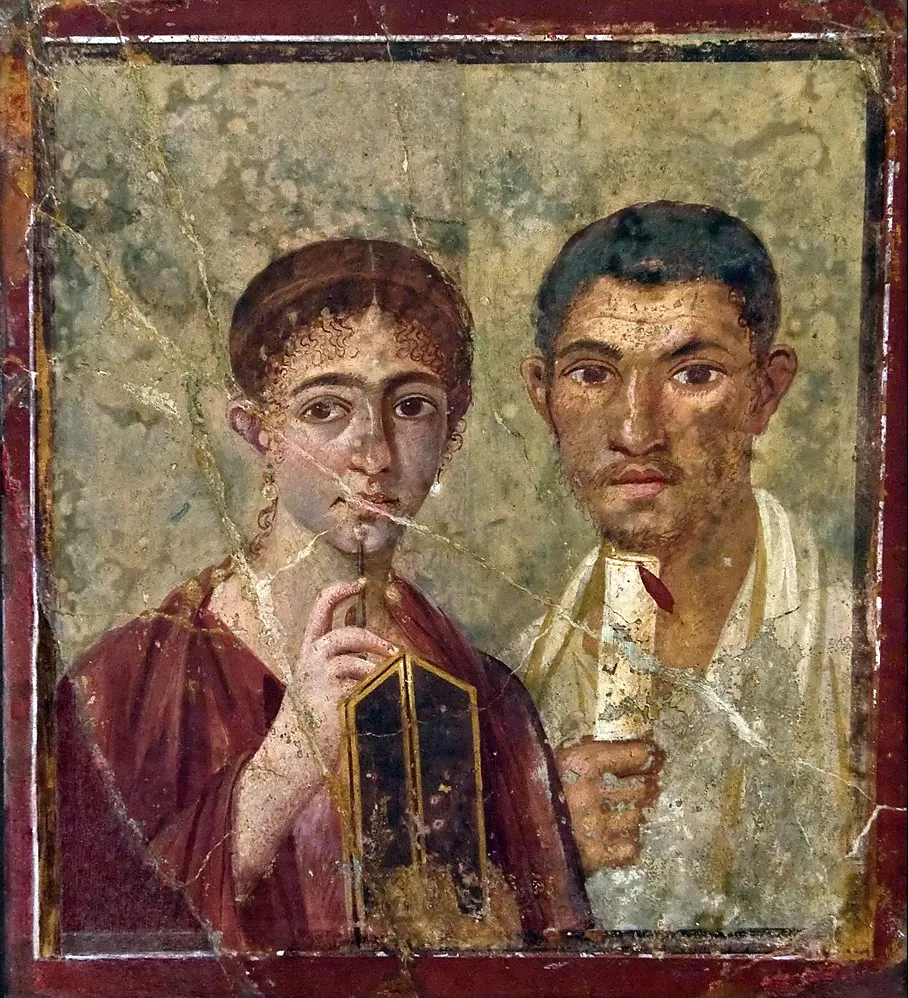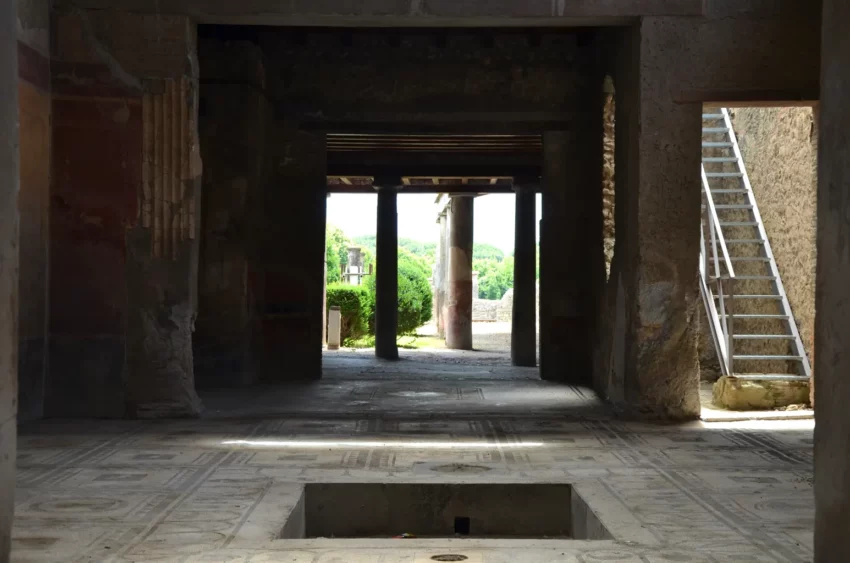A Glimpse into Ancient Roman Life
The House of Paquius Proculus in Pompeii offers a fascinating look into the daily lives of ancient Romans. This house, identified through election slogans painted on its facade, reflects the typical Samnite architectural style. The tall entrance portal leads to a vestibule featuring a mosaic pavement, showcasing the portal itself and a chained dog. This attention to detail sets the stage for the intricate artistry found throughout the house.
Get your dose of History via Email
Intricate Mosaics and Earthquake Scars
The atrium, adorned with mosaic panels depicting animals, shows signs of damage from the earthquake of 62 AD. Only two still-life paintings survive from this period, hinting at the once-vibrant decorations. At the center of the atrium’s pavement, an alabaster tondo is surrounded by a double guilloche motif, palmettes, and animal panels. These intricate designs highlight the artistic prowess of the era.

Rooms of History and Tragedy
A series of rooms open onto the peristyle, revealing more of the house’s layout. One room, tragically, contained the remains of seven children who sought shelter during the volcanic eruption. The northeast corner houses the triclinium, featuring an emblema with a comic scene set in Nilotic surroundings. Here, pygmies fish while crocodiles and a hippopotamus wait menacingly in the water. This scene captures a blend of humor and danger, typical of Roman artistic themes.
The Peristyle and Subterranean Chambers
The peristyle’s centerpiece, a summer triclinium, stood under a pergola with four columns near a basin. Below, subterranean chambers served as storerooms, hinting at the practical aspects of the household. A room at the back of the peristyle contained a humorous mosaic of an ass collapsing under the weight of a silenus, adding a touch of levity to the domestic space.

The Portrait of Terentius Neo
In contrast to the House of Paquius Proculus, the House of Terentius Neo offers another intriguing snapshot of Pompeian life. Discovered in Regio 7, Insula 2, 6, this Roman fresco from around 50 AD portrays a couple holding objects symbolizing literacy. The man wears a toga and holds a rotulus, indicating his involvement in local public or cultural events. The woman, depicted in the foreground, holds a stylus and wax tablet, emphasizing her equal status and literacy.
A Unique Artistic Representation
This fresco, one of the finest from the Vesuvius area, is unusual for several reasons. It shows the couple as equals, both members of a confident and fashionable mercantile class. The realistic imperfections in their faces, typical of Roman portrait sculpture, bring their characters to life. This individualized portrayal is rare in Roman art, which often idealized its subjects.
Conclusion: A Window to the Past
The House of Paquius Proculus and the Portrait of Terentius Neo offer invaluable insights into the lives of ancient Pompeians. From the detailed mosaics and frescoes to the personal tragedies and everyday routines, these remnants of history allow us to glimpse the vibrant, complex world of ancient Rome. As we explore these sites, we uncover stories that transcend time, reminding us of the enduring human spirit and creativity.
Sources:

